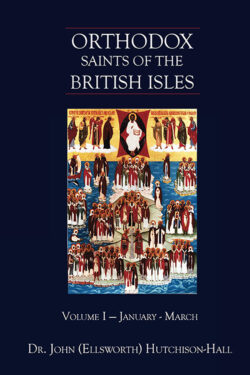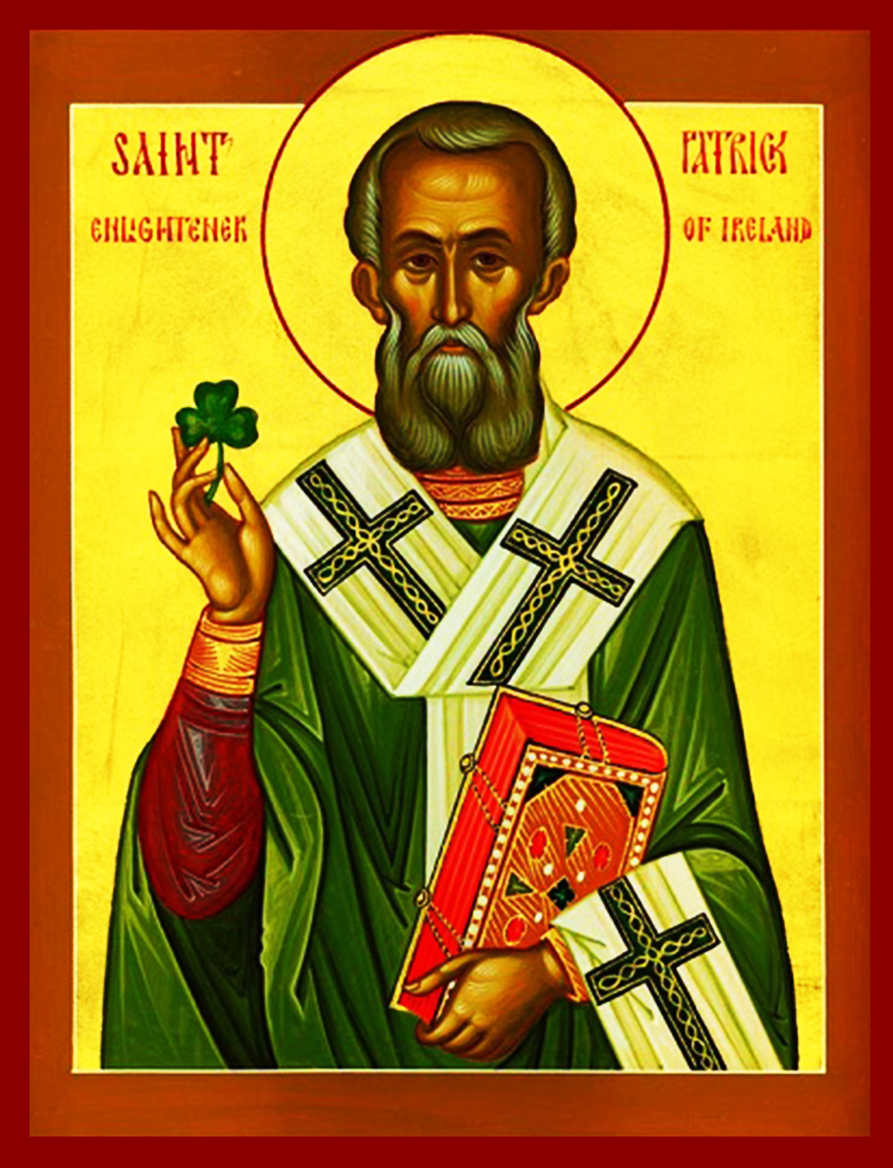
Orthodox Saints of the Pre-Schism
See of Rome
17th March (NS) — 4th March (OS) 2024
ADRIAN and COMPANIONS, St. Adrian was a bishop (perhaps of St. Andrews) on the Isle of May in the Firth of Forth in Scotland, who, along with a group of martyrs (which some sources number in the thousands), was massacred by the Danes in 874. There is no further reliable information on this saint’s life available to us.
APPIAN, a monk at the Abbey of St. Peter of Ciel d'Oro in Pavia, where he served as Steward. He later became a hermit in Commacchio in present-day Emilia Romagna Italy. St. Appian evangelised the area around Commacchio. He reposed circa 800.
BASINUS, a seventh century Abbot of St. Maximin’s Abbey in Trier in the present-day German state of Rhineland-Palatinate. St. Basinus was consecrated thirty-fourth Bishop of Trier circa 671, and served that See until his repose circa 705.
FLIX of RHUYS, a hermit on Ouessant Island off the coast of Brittany. St. Felix later became a monk at the Abbey of St. Benedict on the Loire (abbaye de Saint-Benoît-sur-Loire — Fleury Abbey). St. Felix was given the obedience of restoring the Abbey of St. Gildas of Rhuys which had been razed by the Vikings. St. Felix reposed in 1038.
LEONARD of AVRANCHES, as a youth, St. Leonard was bully with a volatile temper. As an adult, he repented and in time was elected Bishop of Avranches. St. Leonard served that See for thirty years, reposing circa 614.
LUCIUS I, elected the twenty-second Pope of Rome in 253, and briefly exiled by the Emperor Trebonianus Gallus (r. 251–253). St. Lucius is remembered for condemning the Novatian Schism. He reposed in 254 after only 253 days as Pope.
MARTYRS of ROME, a group of nine hundred martyrs (circa 260) buried in the catacombs of Callistus on the Appian Way. Nothing further is known of their lives or martyrdom.
OWEN (OWIN), a monk who accompanied St. Ceadda (Chad) of Lichfield (2nd March) on his mission to the Mercians, St. Owen then served him at Lichfield. Though no Life is extant, tradition has it that he led a most holy life, and by God’s Grace, had many heavenly visions. St. Owen reposed circa 680.
Get your copy of Orthodox Saints of the British Isles today.
Available at Amazon or your favourite e-bookstore.
AGRICOLA (AGRELE, AREGLE), an ascetic who served as eighth Bishop of Châlon-sur-Saône in Burgundy. St. Agricola was known for his concern for the spiritual well-being of his flock and the orderly performance of services. St. Gregory of Tours (17th November) wrote of his asceticism. St. Agricola reposed in 580 at the age of eighty-three.
ALEXANDER and THEODORE, (Date Uncertain), earlier hagiographers have left us extremely limited information on these two saints based upon manuscripts no longer extant. They seem to have been martyrs in Rome, and it is even possible that Alexander was a bishop and Theodore his deacon.
GERTRUDE of NIVELLES, the daughter of Mayor of the Palace of Austrasia, Pepin of Landen (†640) and St. Ida (8th May), and sister of St. Begga (17th December). Following the repose of Pepin, St. Ida founded the double Abbey of Nivelles for herself and her daughter. Some state that St. Gertrude served as the Abbess at St. Ida’s insistence, whether or not this is correct, St. Gertrude was either twenty or twenty-one years of age when she became Abbess. At the age of thirty, St. Gertrude resigned in favour of her niece St. Wilfetrudis (23rd November), spending the rest of her life in prayer and contemplation. St. Gertrude reposed at the age of thirty-three in 659.
PATRICK (PÁDRAIG) of IRELAND, our father among the Saints Patrick of Ireland, Bishop of Armagh, and Enlightener of Ireland, was born a Briton. Captured and brought to Ireland as a slave, he escaped and returned home. Later he returned to Ireland, bringing Christianity to its people. Although St. Patrick achieved remarkable results in spreading the Gospel, he was not the first or only missionary in Ireland, but it was St. Patrick who had the greatest influence and success in preaching the Gospel of Christ. Therefore, he is known as “The Enlightener of Ireland”.
Troparion of St. Patrick — Tone III
Holy Bishop Patrick,
Faithful shepherd of Christ’s royal flock,
You filled Ireland with the radiance of the Gospel:
The mighty strength of the Trinity!
Now that you stand before the Saviour,
Pray that He may preserve us in faith and love!
Kontakion of St. Patrick — Tone IV
From slavery, you escaped to freedom in Christ’s service:
He sent you to deliver Ireland from the devil’s bondage.
You planted the Word of the Gospel in pagan hearts.
In your journeys and hardships, you rivalled the Apostle Paul!
Having received the reward for your labours in heaven,
Never cease to pray for the flock you have gathered on earth,
Holy Bishop Patrick!
St. Patrick is often depicted holding a shamrock, or with snakes fleeing from him. He used the shamrock to illustrate the doctrine of the Holy Trinity; its three leaves growing out of a single stem helped him to explain the concept of one God in three Persons. It is commonly accepted that the story of St. Patrick driving all the snakes out of Ireland has no basis in fact.
St. Patrick reposed on 17th March, though the exact year is a matter of some speculation, with dates ranging from 461 to 493. The various accounts of his last days are most likely legend, and it had been said that the place of his burial was unknown, though St. Columba of Iona (9th June) says the Holy Spirit revealed to him that St. Patrick was buried at the site of his first church in Saul, Co. Down, and a granite marker was placed at his traditional grave site in Downpatrick 1899.
Prior to the Schism the Patriarchate of Rome was Orthodox, and fully in communion with the Orthodox Church. As Saint John of Shanghai and San Francisco +1966 said “The West was Orthodox for a thousand years, and her venerable Liturgy is far older than any of her heresies”.
Details of British Saints excerpted from Orthodox Saints of the British Isles.
Details of continental saints from these sources.
In many cases there are several spelling versions of the names of saints from the British Isles. I use the Oxford Dictionary of National Biography version as the primary version with the more prevalent version in parenthesis e.g. Ceadda (Chad) of Lichfield.


